Email marketing is constantly evolving as new technologies and customer behaviors emerge.
While some email marketing metrics remain crucial to track, others are gaining prominence among modern marketers.
This blog post explores traditional and emerging metrics that can provide valuable insights into your email strategy.
We'll start by defining essential metrics like open rate, click-through rate, and conversion rate that have long helped marketers optimize campaigns.
Then, we'll examine newer metrics, such as engagement rate and deliverability rate, that offer more holistic views of audience interaction and email delivery success. Understanding these basic metrics enables you to make informed decisions to improve performance.
You'll learn practical techniques for boosting rates through elements like personalization, compelling subject lines, and relevant content. Ultimately, this post will equip you with the metrics knowledge to navigate email marketing trends and maximize results.
So, do not wait longer, Before diving into the trends, let's clarify what email marketing metrics mean.
What are Email Marketing Metrics?
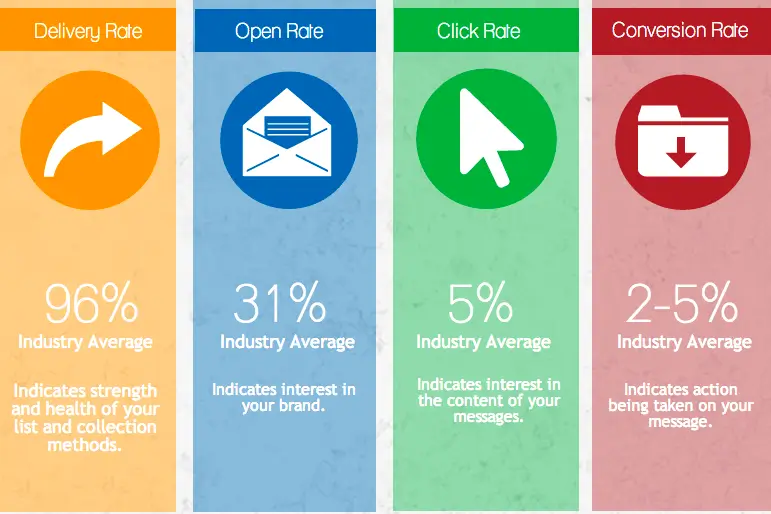
Email marketing metrics are measurable data points that help you track and evaluate the performance of your email campaigns.
These email marketing metrics provide insights into how your audience engages with your emails and allow you to optimize your strategy for better results.
Now that you have a basic idea of what Email marketing matric is, so let us begin with the key Email Marketing Metrics.
Key Email Marketing Metrics
Now that we've established the significance of email marketing analytics, let's look at some essential email marketing metrics each email marketer should monitor.
These indicators are critical for assessing the effectiveness of your email marketing and may help you make educated decisions to improve your approach.
Let's get started!
Click-Through Rate (CTR)
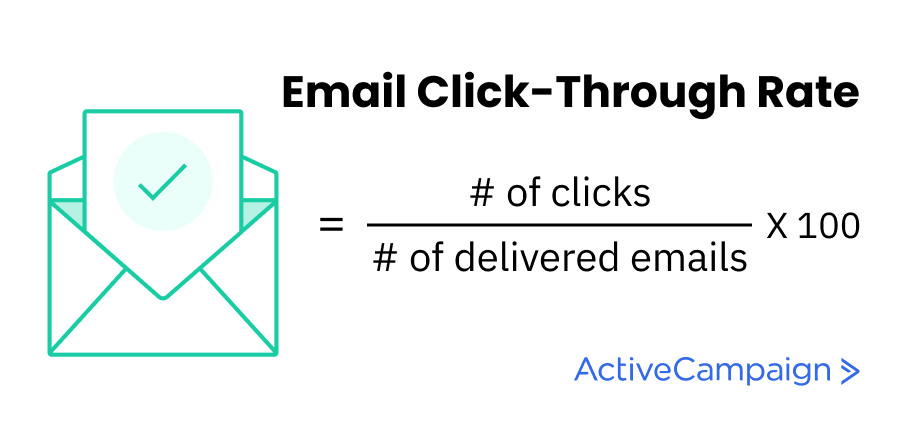
The click-through rate (CTR) measures the percentage of recipients clicking links within your email.
It indicates how engaged and interested your audience is in your content. A high CTR means that your email content is compelling and driving action.
Changing trends and factors affecting CTR
- Interactive elements: Including interactive elements like GIFs, quizzes, and surveys can increase engagement and boost click-through rates.
- Visual enhancements: Using visually appealing images and graphics can capture your subscribers' attention and encourage them to click.
- Targeted segmentation: Segmenting your audience based on their preferences and behaviors can help you deliver more relevant content, resulting in higher CTR.
Best practices to increase CTR
- Ensure your email design is clean, visually appealing, and easy to navigate.
- Use clear and enticing call-to-action (CTA) buttons that stand out.
- Personalize your emails with various content based on subscriber preferences and behaviors.
Open Rate
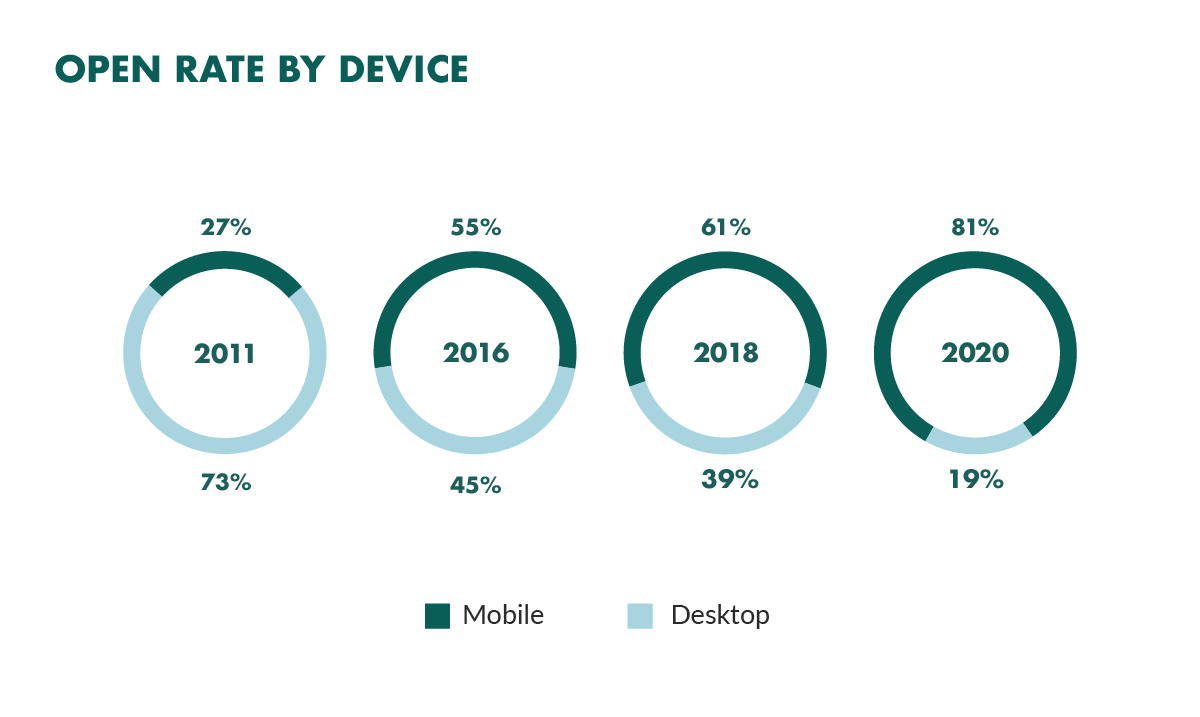
The open rate is a crucial metric that measures the percentage of recipients who open your emails. It gives you an indication of how well your subject lines and email content are resonating with your audience.
It's essential to monitor your open rates because they directly impact the effectiveness of your campaigns.
Emerging trends and factors impacting open rates
- Mobile optimization: With most people now checking their emails on mobile devices, optimizing your emails for mobile view is essential for increasing open rates.
- Personalization: Personalized subject lines and content can take the attention of your subscribers and encourage them to open your emails.
- Email subject lines: Crafting compelling and attention-grabbing subject lines can significantly impact your open rates. Experiment with different approaches and monitor their effectiveness.
Tips to improve open rates
- Concentrate on developing entertaining and relevant content that will resonate with your target audience.
- A/B test your subject lines to know which ones are most effective with your readers.
- Segment your audience to deliver personalized and targeted content, leading to higher open rates.
Conversion Rate
The conversion rate is the percentage of receivers performing a desired activity, such as purchasing or subscribing to a newsletter.
It's an essential statistic since it allows you to assess the performance of your efforts in boosting user engagement and meeting your business objectives.
Evolving trends and factors influencing conversion rates
- User experience optimization: Providing a flawless and engaging user experience can boost the chance of conversions. Ensure your emails are mobile-friendly and your landing pages are visually appealing and simple to use.
- Quality of landing pages: The quality of your landing pages can greatly influence your conversion rates. Optimize your landing pages by ensuring they are consistent with your email content and have a clear call-to-action.
- Call-to-action effectiveness: The effectiveness of your call-to-action (CTA) buttons can determine how likely your subscribers are to convert. Ensure your CTA buttons stand out and that they provide a clear and compelling reason to take action.
Strategies to boost conversion rates
- Use clear and concise language to reinforce your offer's benefits and increase your subscribers' perceived value.
- Include persuasive social proof elements, like reviews of customers or testimonials, to build trust and credibility with your audience.
- Experiment with different offers and messaging to determine what resonates best with your audience.
Suggested Reading:
Bounce Rate
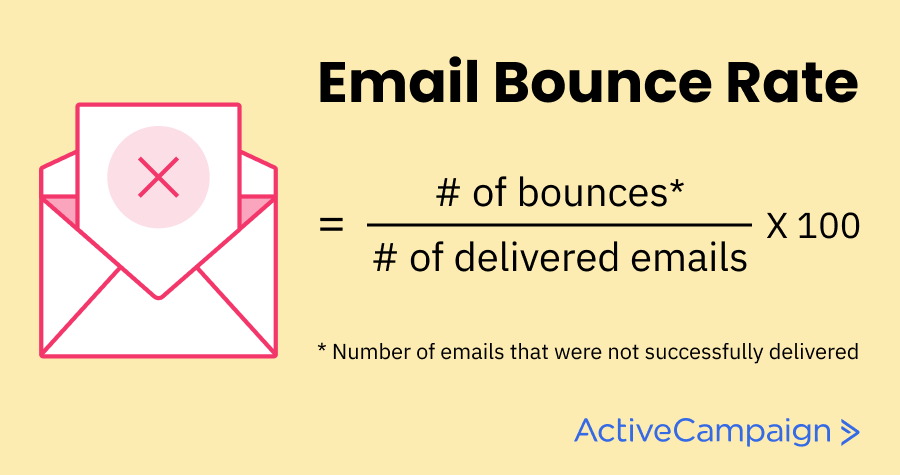
The bounce rate is the % of emails returned to the sender because they are undeliverable. A high bounce rate might harm the performance of your efforts by lowering email delivery and even harming your sender's reputation.
Changing trends and factors affecting bounce rates
- List maintenance and hygiene: Keeping an email list clean and current helps lower bounceback rates and increase email deliverability.
- Email deliverability: The possibility of your emails reaching subscribers' inboxes is referred to as email deliverability. Improve your email deliverability by adhering to email authentication best practices and avoiding spammy email content.
- Spam filter sensitivity: Spam filters are becoming increasingly sophisticated in detecting and filtering spammy emails. Avoid common spam triggers, such as using all caps in your subject line or including too many exclamation points.
Techniques to reduce bounce rates
- Regularly update your email list to remove invalid or inactive email addresses.
- Use email verification tools to ensure the accuracy of your email addresses before sending.
- Monitor your email deliverability and take steps to improve it, such as ensuring your emails are authenticated and using a reputable email service provider.
Unsubscribe Rate
The unsubscribe rate measures the % of recipients who opt-out or unsubscribe from your email list.
While it may seem counterintuitive to focus on unsubscribe rates, it's an essential email marketing metric for understanding your subscribers' engagement and satisfaction levels.
Emerging trends and factors influencing unsubscribe rates
- Frequency and relevancy of emails: Bombarding your subscribers with multiple emails or sending irrelevant content can lead to higher unsubscribe rates. Find the right balance and ensure that your emails provide value and relevance to your audience.
- Personalization and targeting efforts: Personalized and targeted emails can strengthen connections with your subscribers and reduce their likelihood of unsubscribing. Use segmentation and automation to deliver tailored content to different segments of your audience.
- Email preference management: Providing easy-to-use email preference management options allows subscribers to control the type and frequency of emails they receive. This can help reduce unsubscribes by enabling subscribers to customize their experience.
Ways to minimize unsubscribe rates
- Attention to your email frequency and ensure it aligns with your subscribers' preferences and expectations.
- Continually analyze and refine your email content to provide value and relevance to your audience.
- Make it easy for subscribers to update or opt-down instead of completely opting out.
ROI (Return on Investment)
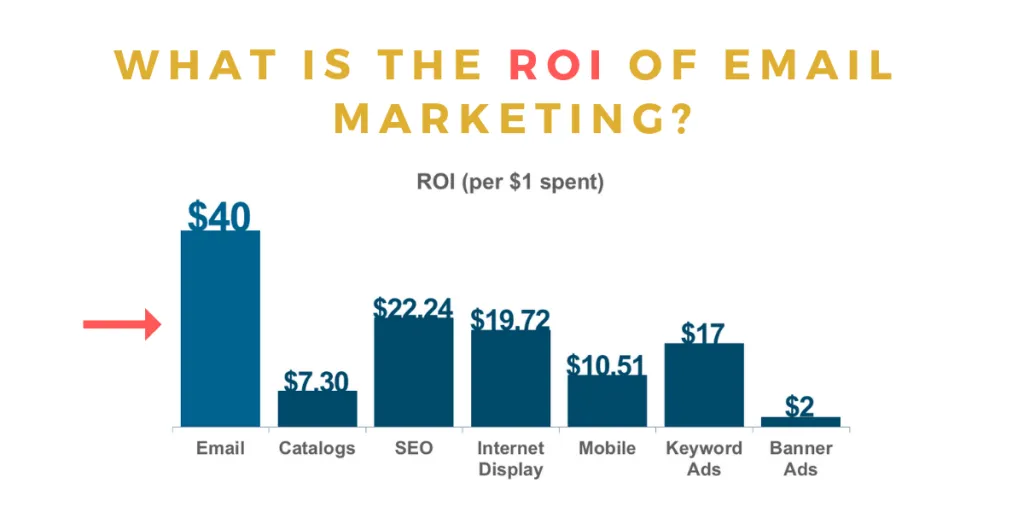
ROI (Return on Investment) measures the profitability and effectiveness of your email marketing campaigns.
It helps you understand how much revenue you're generating about the investments you're making in your email marketing efforts.
Evolving trends and factors impacting email marketing ROI
- Automation and segmentation: Automating your email campaigns and segmenting your audience allows you to deliver targeted and relevant content at scale, improving the effectiveness and efficiency of your campaigns.
- Integration with other marketing channels: Integrating your email marketing efforts with other marketing channels, such as social media or content marketing, can amplify your reach and impact, leading to better ROI.
- Tracking and analytics tools: Utilizing advanced tracking and analytics tools allows you to measure and analyze the impact and effectiveness of your email marketing campaigns. This data can guide you in optimizing your efforts for better ROI.
Strategies to optimize email marketing ROI
- Set clear goals and objectives for your email marketing campaigns, aligning them with your overall marketing strategy.
- Experiment with email automation workflows and segments to identify the most effective strategies for driving conversions and revenue.
- Continually analyze your email campaign performance and make data-driven optimizations to improve ROI.
Now after looking into the key Email Marketing Metrics, it's time to see newer metrics, such as engagement rate and deliverability rate.
Suggested Reading:
New Email Marketing Metrics and KPIs
In this section, we'll be seeing two essential metrics – engagement rate and deliverability rate.
Understanding and monitoring these metrics can provide valuable insights into the effectiveness and deliverability of your email campaigns.
So, let's dive right in!
Engagement Rate
Engagement rate is a comprehensive metric that measures the level of interaction and engagement your subscribers have with your email campaigns.
It goes beyond simply measuring opens or clicks and provides a more holistic view of how your audience interacts with your content.
Calculation of engagement rate
Engagement rate is calculated by dividing the number of engaged users (opens, clicks, conversions, etc.) by the total number of delivered emails and multiplying by 100 to get a percentage.
Importance and benefits of tracking engagement rate
Tracking engagement rate is significant because it helps you gauge the effectiveness of your email campaigns in capturing and retaining your audience's attention.
It provides insights into how well your content resonates with your subscribers and allows you to make data-driven decisions to optimize future campaigns.
Tactics to improve engagement rate
- Craft compelling subject lines and pre-headers that attract attention and encourage recipients to open your emails.
- Personalize your email content to make it relevant and tailored to the interests and preferences of your subscribers.
- Segment your audience and deliver targeted content based on their demographics, behavior, or past interactions.
- Experiment with different types of content, such as videos, gifs, or interactive elements, to keep your subscribers engaged.
- Continuously analyze your engagement rate and adjust your email strategy based on the insights gathered.
Deliverability Rate
Deliverability rate refers to the percentage of your emails that successfully reach your subscribers' inboxes.
It is a vital metric because if your emails are not being delivered, all other efforts to engage and convert your subscribers will fail.
Calculation of deliverability rate
The deliverability rate is calculated by dividing the emails delivered to the inbox by the total number of emails sent and multiplying by 100 to get a percentage.
Several factors can impact your deliverability rate, including
- Inbox placement: Ensuring your emails land in the primary inbox rather than the spam or promotions folder is crucial. Follow best practices, such as avoiding spam trigger words and using authentic email addresses and domains, to increase your chances of inbox placement.
- Spam complaints: High spam complaint rates can negatively impact your sender's reputation and deliverability. Provide clear unsubscribe options, honor opt-outs promptly, and regularly clean your email list to minimize spam complaints.
- Email authentication: Implementing email authentication protocols like SPF, DKIM, and DMARC can improve your deliverability by verifying your identity and reducing the chances of your emails being flagged as spam.
Techniques to enhance deliverability rate
- Regularly monitor your email deliverability using deliverability tools and services.
- Maintain an updated and clean email list by removing inactive or invalid addresses.
- Engage your subscribers through double opt-ins to ensure the accuracy of their email addresses.
- Establish a good sender reputation by consistently sending relevant and high-quality content.
- Test your email campaigns with different providers to ensure consistent deliverability across various platforms.
Conclusion
And that wraps up our exploration of the changing trends in email marketing metrics! As email marketing continues to evolve, it's important to stay on top of the latest metrics and KPIs that can help you measure and optimize your campaigns.
From open and click-through rates to conversion rates and ROI, understanding these metrics and the factors influencing them will empower you to create more effective and engaging email campaigns.
So, keep experimenting, analyzing, and adapting your strategies to stay ahead of the curve in the ever-changing world of email marketing.
Good luck, and may your metrics soar to new heights!
Suggested Reading:
How WhatsApp Integrations can Improve Your Customer Service?
Frequently Asked Questions (FAQs)
What are the latest trends in email marketing metrics?
The latest trends in email marketing metrics include increased focus on engagement metrics like open rates, click-through rates, and conversion rates, as well as the integration of advanced analytics for more personalized and targeted email campaigns.
How do you calculate the ROI for email marketing campaigns?
The ROI for email marketing campaigns is typically calculated by subtracting the total investment in the campaign from the total revenue generated, dividing the result by the total investment, and then multiplying the outcome by 100 to get the ROI percentage, reflecting the campaign's overall profitability.
What are the most important stats for email marketing?
The most important stats for email marketing include open rates, click-through rates, conversion rates, bounce rates, and unsubscribe rates, providing insights into the effectiveness of email campaigns, subscriber engagement, and overall campaign performance.
What are the characteristics of good email statistics to monitor for campaign success?
Good email statistics to monitor for campaign success include high open and click-through rates, low bounce and unsubscribe rates, consistent engagement over time, and a positive trend in conversion rates, indicating the effectiveness and impact of email marketing efforts.
Does email marketing have an ROI of 4400%?
While specific ROI percentages can vary based on various factors, email marketing has shown a consistently high ROI compared to other marketing channels, with an average ROI of 4400% according to Hubspot, making it one of the most cost-effective and efficient marketing strategies for businesses.



